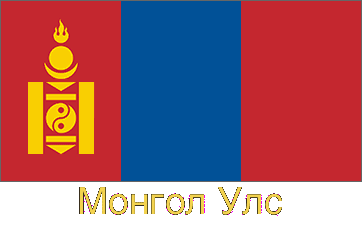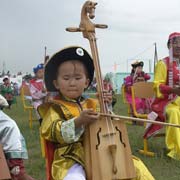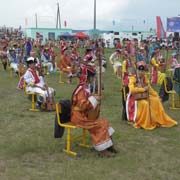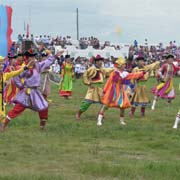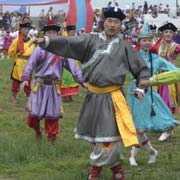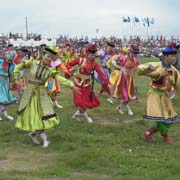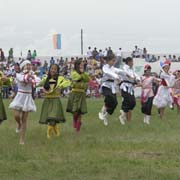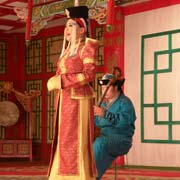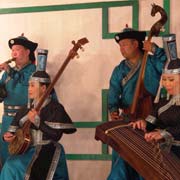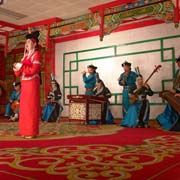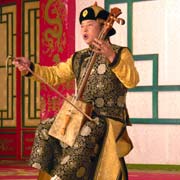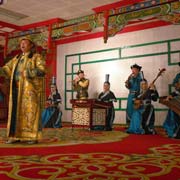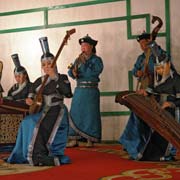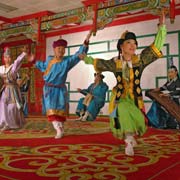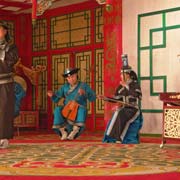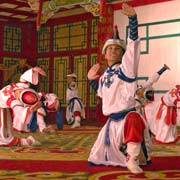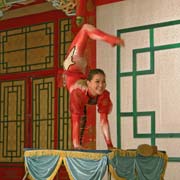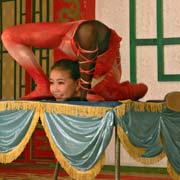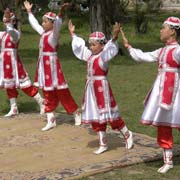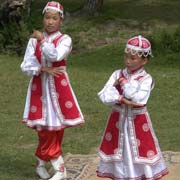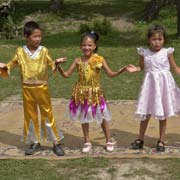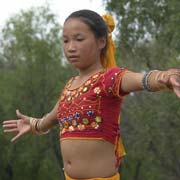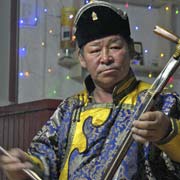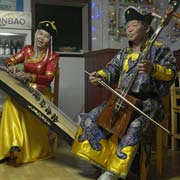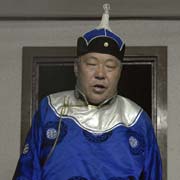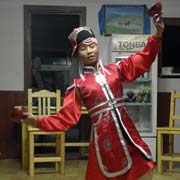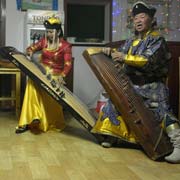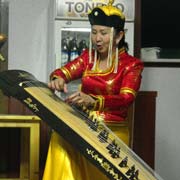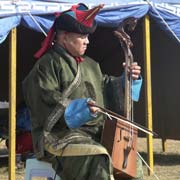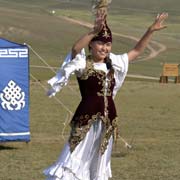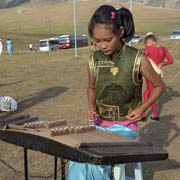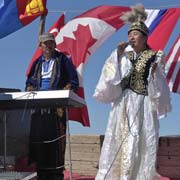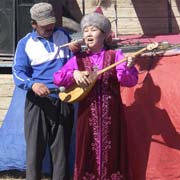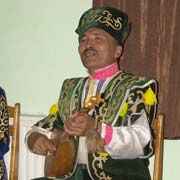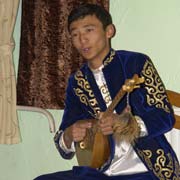Photos of Music and Dance of Mongolia
Music and Dance of Mongolia
The traditional music of Mongolia plays a vital role in the country’s culture, with great variations between the different ethnic groups. The best known national instrument is the Morin Khuur, the two-string fiddle with the carving of a horse head at the top of the pegbox, considered a symbol of the country. Other instruments can be seen in folk ensembles performing in Ulaanbaatar and elsewhere: the Surnai-ever buree, a folk oboe with a conical body made of wood or horn (ever buree = horn); the Shudraga or Shanz, a string instrument, with a sound comparable to that of a banjo); a base, with a horse-head carving; and the Yatga or Yatuga, a half-tube zither with a movable bridge.
you may then send it as a postcard if you wish.
There are different singing styles, like the “Long song” (Urtyn duu), because each syllable of text is sung for a long duration, with deep vibrato. There is also the “Short song” (Bogino duu), not as spectacular or ancient as “long songs” and technically not as complex as the latter, but still, performing them requires having a trained voice and good rhythm. Short songs are generally very upbeat and are accompanied by an orchestra. But the best-known singing tradition is Khöömii (“throat singing “): the singer produces more than one pitch simultaneously, creating overtones by changing the shape of the resonant cavities of his mouth, voice box and the back of his throat. It almost sounds like whistling. It is prevalent in the west of Mongolia and across the Russian border in Tuva.
Traditional dancing may be seen in the theatre performances in Ulaanbaatar, like those of the Mongolian National Song & Dance Ensemble and the Tumen Ekh Song & Dance Ensemble. But it can also be seen at the yearly Naadam Festivals, and children are often the star performers - the culture is very much alive. And Mongolian contortion, a gymnastic art, is popular with young girls in both Mongolia and China; young girls display incredible flexibility.


